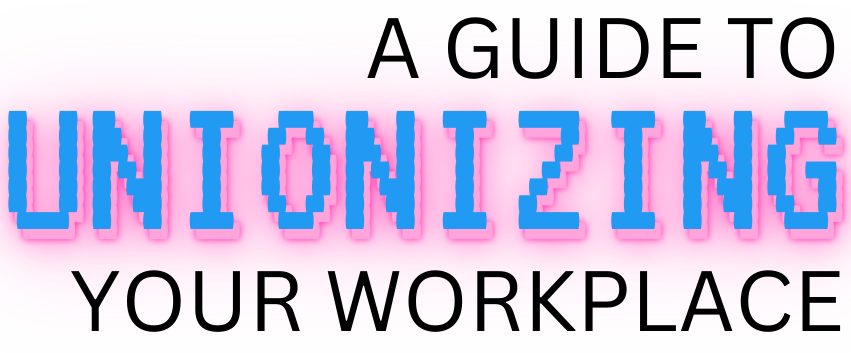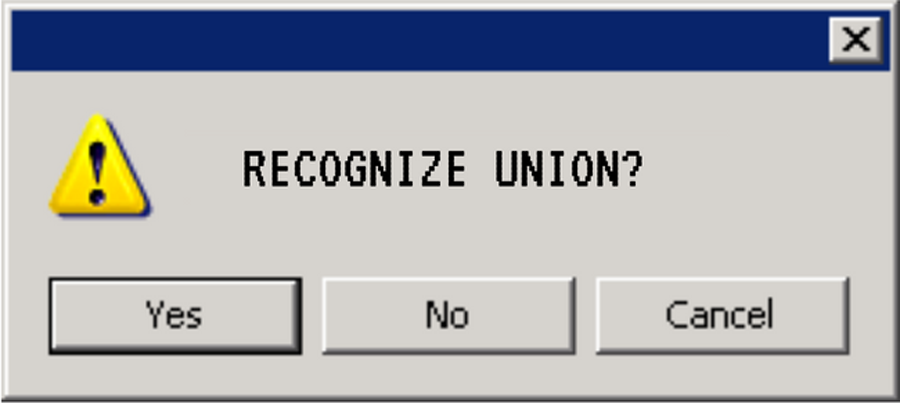HOT LABOR SUMMER: A LABOR AND UNIONIZATION TOOLKIT

WHY SHOULD I UNIONIZE?

Unions give you a voice to negotiate for your conditions — like wages, healthcare, workplace safety, and hours.

Union workers earn more than their nonunion counterparts. Non union workers earn just 85% of what unionized workers make.

Unions reduce income inequality. With collective bargaining, racial and gender-based income inequality is reduced and all people (not just the rich ones) get a share in the benefits of the labor.

Unions have fought for: weekends, breaks at work, paid vacation, the 8-hour workday, overtime pay, sick leave, and employer-based health coverage

Unions build power for working people, protect workers, and help close the wealth inequality gap
When you and your co-workers form a union, you earn the right to negotiate for:
- Higher wages
- Better benefits like health insurance and pensions
- Protections from unsafe work environments
- A voice in your workplace without the fear of retaliation
Here are five common steps to take to form a union in your workplace:

Step 1: Get together with your co-workers who may share a common interest in organizing a union
Do many of you share the same concerns about your workplace? Think of your top five collective issues and write a list.
Make sure to only talk while you’re on a break, away from your office or work areas, or off company property.
Organizing a union is protected by law, but you should avoid letting management know for as long as you can.

Step 2: Find or build the right union for you.
Do some research online or connect with union members in your local community or in the same industry.
Set up an organizing committee, or a group of workers made up of people across your workplace that is representative of your workplace to collaborate to move a union campaign forward.

Step 3: Talk to your co-workers to build majority support for the union.
Schedule one-on-ones with your coworkers to discuss issues in your workplace and build support for your union.
Remember to continue your union discussions to non-working locations.

Step 4: Now that you have a strong majority, show unionization support in your workplace through a petition or what is called a card check.
You will need at least 30% of workers to indicate an interest in a union.
You will then submit those signed cards or petition signatures to the National Labor Relations Board in order to get a union election.
There is another way to choose your representation: If your employer voluntarily recognizes the union after showing majority support, you can notify the National Labor Relations Board (NLRB) that voluntarily recognition has been granted.


Step 5: Secure a majority of the vote in your union election.
Then, the bargaining begins.

You have the right to join, form, and assist a union.
You have a right to distribute union literature, wear union insignia, ask coworkers to sign union cards, and talk about unionizing with coworkers.
Supervisors and managers cannot spy on you, question you, threaten you, or bribe you regarding your unionization efforts.
You can’t be fired, disciplined, demoted, or penalized for unionizing.
HELPFUL GUIDES:
UNION CONTACT US PAGES:
- AFL-CIO
- American Federation of Teachers
- SEIU
- Teamsters
- United Auto Workers
- United Food & Commercial Workers International Union
- United Steel Workers
- Workers United
USEFUL LINKS WHEN ORGANIZING:
- NLRB file a complaint link
- NLRB Know your Rights during Union Organizing
- NLRB Regional Offices
- Department of Labor Union Search
BUY WORKING FAMILIES PARTY SWAG:
(a portion of proceeds will be donated to strike funds)




